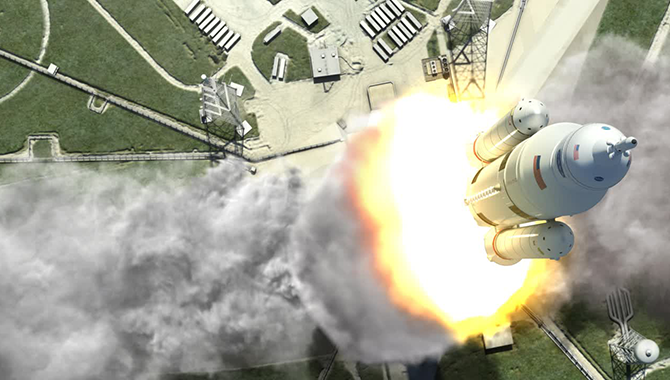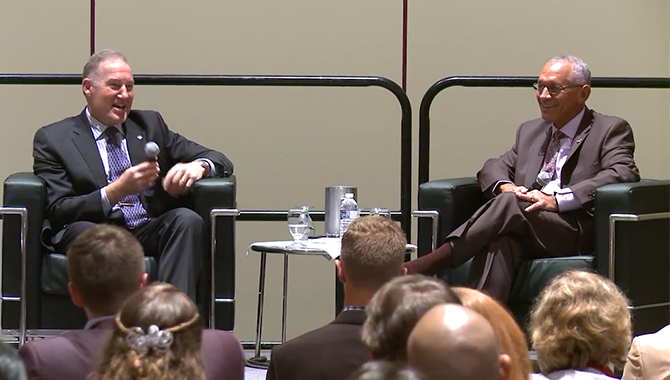
Artist's rendering of NASA's Space Launch System during liftoff.
Image Credit: NASA/MSFC
In his State of NASA speech on February 2, 2015, NASA Administrator Charlie Bolden shared his excitement about the robust future of the agency.
“As I stand here today…I can unequivocally say that the state of NASA is strong,” said Bolden. To support this statement, the administrator pointed to the innovative and influential work being done by the agency in service of both space exploration and life on Earth.
NASA’s human space exploration programs are more visible and impactful now than they have been in years. Orion recently completed its first mission, a nearly flawless test of crucial crew-safety systems. The Space Launch System (SLS), a heavy-lift rocket that will one day send crew in Orion farther into space than humans have gone before, is readying for a test firing of the most powerful booster ever built. Together, Orion and SLS will expand the frontiers of human space exploration.
A critical component of NASA’s ability to focus on deep space exploration is the involvement of private industry in delivering cargo and crew to the International Space Station (ISS) so that its important work can continue without overtaxing the resources of the agency. “U.S. companies, large and small, are developing the new systems in which our astronauts soon will travel from right here on the Space Coast in Florida to low Earth orbit. This initiative, where we hand off low Earth orbit transportation to the private sector, is critical to our journey to Mars,” said Bolden.
Yet he cautioned the audience not to limit their vision to the red planet. “Mars is a key destination, but it’s only one point on our journey of discovery. It’s a journey across and out of our solar system to the farthest reaches of the universe and the frontier of the human capacity to explore.” He mentioned the meaningful exploration done through spacecraft such as MAVEN and Curiosity, studying Mars; New Horizons, now nearing Pluto; and Juno, headed toward Jupiter. Bolden then inspired the audience to look farther still with the Hubble Space Telescope and Kepler Space Telescope, currently searching beyond our solar system for Earth-like planets, and noted that the most powerful space telescope ever—the James Webb Space Telescope—has its sights set on a 2018 launch.
Although Bolden emphasized the accomplishments of NASA in space, he also said, “As we all know, the most important planet we study is the one on which we live: Earth.” He stressed that the technologies developed for space exploration have meaningful applications to this planet. For example, although the Space Shuttle Program has ended, the shock absorbers developed to launch the orbiter are now being used in construction to brace buildings against earthquake shocks. In addition, NASA is working to reduce the environmental impact of the aviation industry while maintaining safety for the people who travel through the skies each day.
Bolden referred to the past 12 months as the “Year of Earth,” during which five Earth science missions were launched by the agency. These missions will study a range of global phenomena, including winds, clouds, and precipitation. Their findings will drive monitoring and understanding of floods and water cycles, improve forecasts for crop yields, and help scientists and engineers conceive of strategies to combat challenges such as the intense drought currently affecting the western U.S.
“NASA is an incredible investment for our nation because what we do not only uncovers new knowledge, it helps raise the bar of human achievement.” The administrator said that the future looks strong for NASA in FY2016, as the President has proposed an 18.5 billion-dollar budget for the agency. “That’s a half billion-dollar increase over last year’s enacted budget, and it is a clear vote of confidence in you—the employees of NASA—and the ambitious exploration program you are executing.”
Watch Reach for New Heights, a video highlighting NASA’s progress and pursuit of innovation and exploration in space and on Earth.









